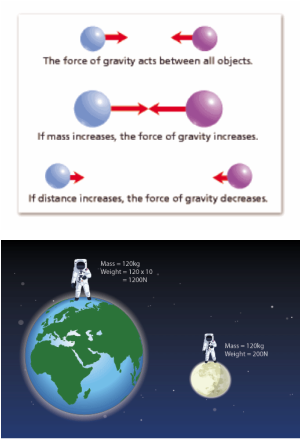What is the basic unit of life?
Cell
True or False: All living organisms are made of cells.
True
What 3 particles make up an atom?
Protons, neutrons, electrons
What does the periodic table organize?
All known elements
Light travels in a __________ line at a fixed speed.
Straight
What makes sound?
Vibrating Objects
What does gravity do to all masses?
Pulls them toward each other
What are the two main types of cells: one with one cell, one with many?
Unicellular and multicellular
What do we call a group of similar cells working together?
Tissue
What charge does a neutron have?
Neutral (no charge)
Are metals found on the left or right side of the table?
Left

Why do we see shadows?
Light can't pass through objects (it is blocked)
What unit is used to measure frequency of sound?
Hertz (Hz)
Which has more gravity: a large or small mass?
Large mass
Name 3 organelles found in both plant and animal cells.
Nucleus, cell membrane, cytoplasm
What is diffusion and why is it important for cells?
Movement of molecules from high to low concentration; helps cells get nutrients and remove waste
What is the difference between an element and a compound?
Element = one type of atom; Compound = two or more different atoms bonded
Name one trend in reactivity as you go down Group 1.
Reactivity increases
Why do we see things before we hear them?
Light travels faster than sound
Describe a longitudinal wave.
A wave where particles move back and forth in the same direction as the wave
What force keeps planets orbiting the Sun?
Gravity
What is the function of the mitochondria?
Produces energy for the cell (site of respiration)
How do oxygen and carbon dioxide move in and out of cells?
By diffusion
How many atoms are in the formula C₆H₁₂O₆?
24 atoms total (6 C, 12 H, 6 O)
Compare a metal and a non-metal’s properties.
Metals are shiny, conduct heat; non-metals are dull, poor conductors
What is the law of reflection?
Angle of incidence = angle of reflection
Why does sound travel fastest in solids?

What is the difference between a day and a year on a planet?
Day = one spin (rotation); Year = one orbit around the Sun
Describe one way a plant cell is different from an animal cell.
Plant cells have a cell wall and chloroplasts; animal cells do not.
How is a red blood cell’s shape adapted to its job?
It is biconcave to increase surface area for oxygen transport.
How are electrons arranged in an atom?
In energy levels (shells) around the nucleus
Why does an atom's reactivity depend on its outer electrons?
Atoms react to gain or lose outer electrons to become stable
What happens when light hits a flat mirror?
It reflects at the same angle it came in (reflection)
What’s one permanent effect of loud noise on the ear?
Hearing loss
What causes eclipses?
When the Moon or Earth blocks light from the Sun